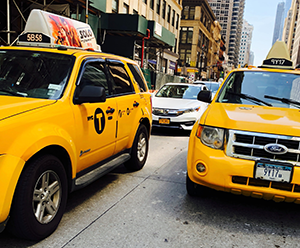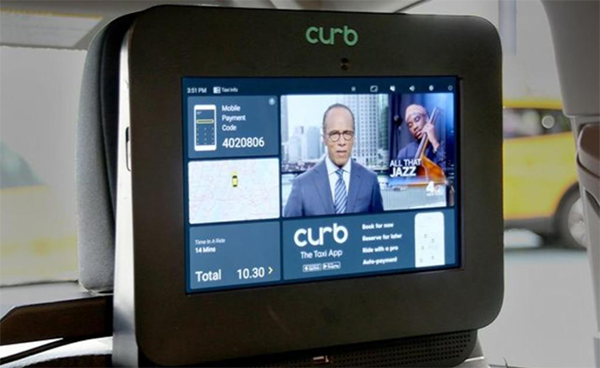
Taxi Advertising
Taxi advertising has recently been added as an option for our clients to take advantage of. For about six months, BillboardsIn has been working on providing this unique option for people to choose, and now it has finally arrived.
What it is
An ad can be placed on various parts of a taxi. Traditionally, you see them up on the top, which is referred to as a “topper.” As technology has advanced, it’s now possible to display ads within a vehicle. These can be found on screens behind the driver and front passenger seats.
Currently, BillboardsIn offers in-car advertising and taxi toppers as options for our clients. See the picture below for an example of an in-car ad.

Taxi advertising is a powerful tactic for getting your messaging out to a large audience, because they’re everywhere in a metropolitan area. When in a city like New York, you can’t help but see more than a dozen taxis at a given time. In fact, in NYC alone, there are around 14,000 certified taxis, each one of them being an opportunity for great out-of-home advertising.
What Makes Them Great
An advantage of taxis over traditional billboards is their mobility. A billboard’s marketing capabilities are limited to its surrounding area. With a taxi, your messaging will travel across a wide area, which ensures that a range of people will see it.
In the case of in-car advertising, people are more likely to engage with your ad because the screen is right in front of them.
Another strength of taxis is that their pricing keeps them competitive in a market filled with Uber and Lyft drivers. The first taxicab as we know it was created in 1897 by Gottlieb Daimler, a German engineer. For over a century, taxis have continued to stay relevant, and it’s not just their familiarity, but the fixed rate of a fare.
Let’s use NYC again as an example. All NYC taxis rely upon a meter, which charges $2.50 plus 50 cents per mile. Compare this with Uber and Lyft whose pricing relies heavily on the conditions of the economy. Back in 2021, Uber and Lyft experienced a surge in their prices because of a lack of drivers from the COVID-19 pandemic. It becomes clear why taxis continue to be a trustworthy source of transportation despite the multiple ride-share competitors. Rest assured that your OOH media is being used with a relevant medium.
More on the Horizon
BillboardsIn will continue to expand into more advertising mediums. Our sights are set on bus wraps, bench ads, and subway signage to just name a few.

